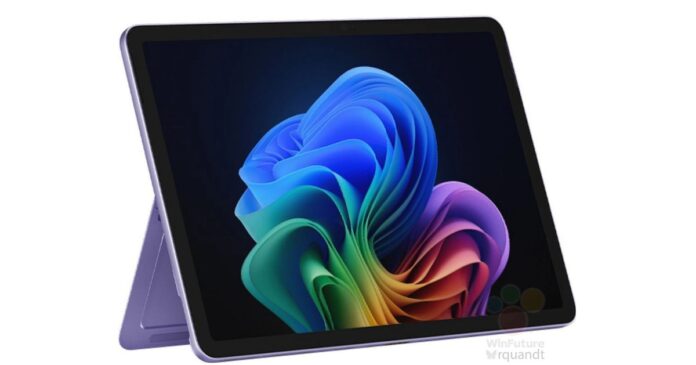Introduction to Microsoft’s New Surface Devices
Microsoft is preparing to unveil a fresh lineup of Surface devices, including a new 12-inch Surface Pro and a 13-inch Surface Laptop, both powered by Qualcomm’s Snapdragon X Plus platform. This move is expected to strengthen Microsoft’s position in the Arm-powered PC space.
Features of the 12-inch Surface Pro
The speculated 12-inch Surface Pro marks a return to a smaller form factor, recalling earlier models like the Surface Pro 3, but with modern Arm-based hardware. It features a PixelSense Flow LCD display and runs on the Snapdragon X Plus X1P-42-100 chip, which features eight custom Oryon CPU cores and an integrated Hexagon NPU capable of up to 45 TOPS (trillion operations per second) of AI performance. The device will reportedly ship with 16GB of LPDDR5X RAM and offer either 256GB or 512GB of UFS-based storage, which is faster but less expensive than traditional NVMe SSDs.
Technical Specifications
- 12-inch PixelSense Flow LCD display
- Snapdragon X Plus X1P-42-100 chip
- 16GB of LPDDR5X RAM
- 256GB or 512GB of UFS-based storage
- Up to 16 hours of local video playback
- Two USB 3.2 Type-C ports
- Available in Ocean Blue, Platinum Gray, and Violet finishes
Features of the 13-inch Surface Laptop
The new 13-inch Surface Laptop serves as a more affordable sibling to the 13.8-inch and 15-inch Surface Laptop 7 models. It too uses the Snapdragon X Plus SoC and matches the 12-inch Surface Pro’s memory and storage specs. Notably, it features a PixelSense Flow LCD display but with a 60Hz refresh rate, suggesting that Microsoft is cutting corners to bring down the cost of the device.
Technical Specifications
- 13-inch PixelSense Flow LCD display with 60Hz refresh rate
- Snapdragon X Plus SoC
- 16GB of LPDDR5X RAM
- 256GB or 512GB of UFS-based storage
- Glass touchpad
- Fingerprint reader for Windows Hello
- Two USB 3.2 Type-C ports, one USB Type-A port, and a 3.5mm headphone jack
Strategic Shift and Accessibility
These compact models hint at a strategic shift towards a more accessible, energy-efficient Surface lineup. Microsoft appears to be building momentum toward showcasing the next wave of Windows on Arm improvements expected with the next major Windows release. The decision to omit the proprietary Surface Connect charging port and not include a charging brick, instead relying on USB Type-C PD chargers, further suggests that the new devices are aimed at a more budget-friendly segment.
Conclusion
The official reveal of these Surface devices is expected at Microsoft’s event on May 6, where pricing, availability, and more details about the rumored Surface products may be announced. As Microsoft moves towards a more accessible and energy-efficient lineup, it will be interesting to see how these devices are received by consumers and how they impact the Arm-powered PC space. With their compact designs, modern Arm-based hardware, and focus on affordability, these new Surface devices are poised to make a significant impact in the market.

